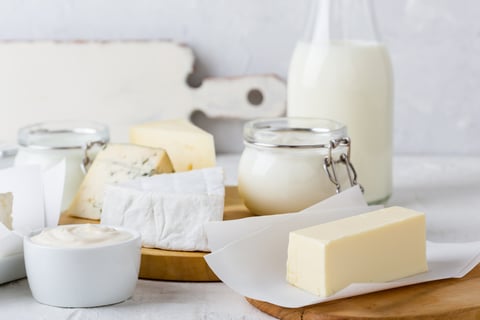
Americans are consuming less and less dairy, swapping in sodas, juices, and milk substitutes for the traditional cream the milkman used to deliver every morning, and it’s having an effect on the dairy industry. Borden Dairy, a milk-producing giant filed for bankruptcy in January of 2020 and is currently undergoing reorganization, only a few months after Dean Foods declared bankruptcy in 2019.
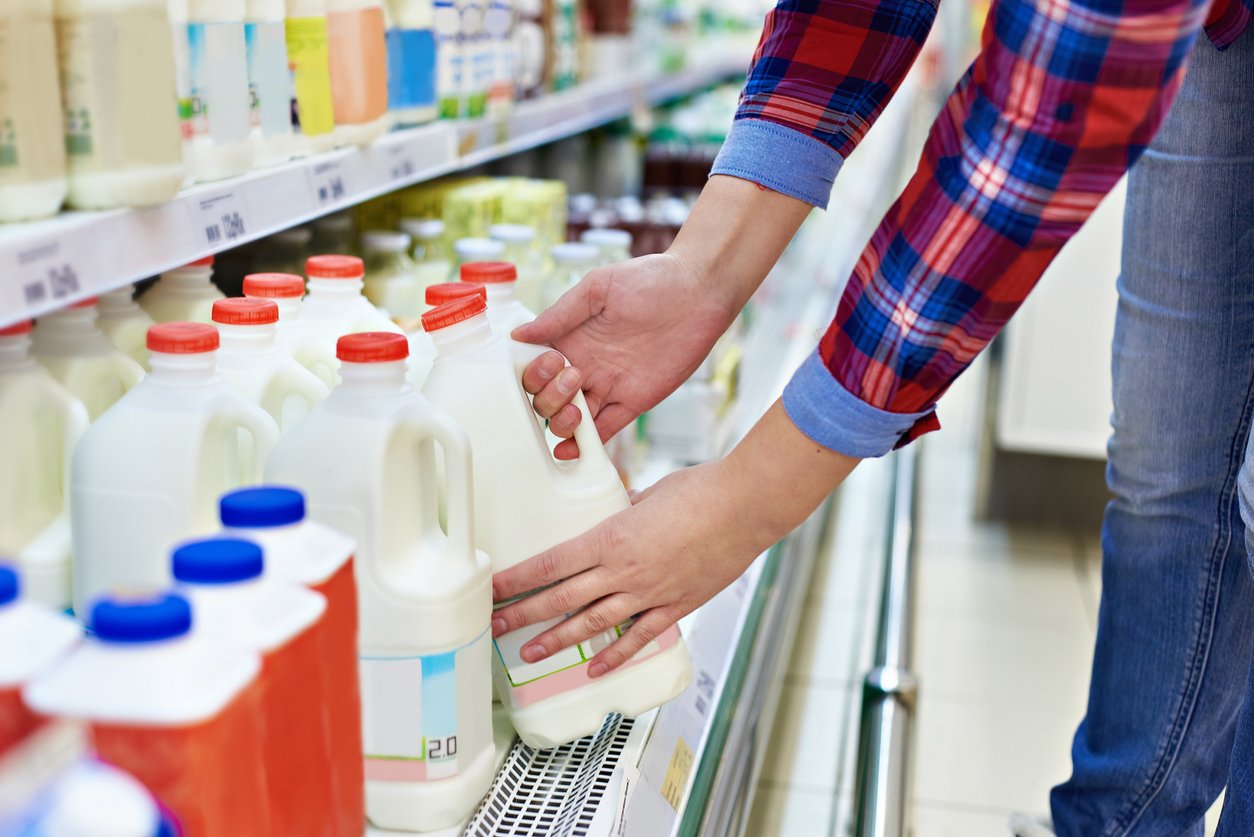

Woman shopping for milk in the grocery store. Photo courtesy of iStock/sergeyryzhov
But it’s not just Big Dairy that’s suffering. Small farms scattered across Wisconsin are taking a hit, too, with almost 1,500 Wisconsin dairy farms closing in the past two years.
What’s behind America’s waning love affair with dairy, and what will the future hold for the industry?
Plants Have Taken Root in the Dairy Industry
Alternative dairy products like almond, soy, and oat milks are competing for traditional dairy sales—we all have at least one friend who swears by these plant-based substitutes. A decrease in cereal consumption has also contributed to fewer milk sales. Millennials, with their specific tastes and preference to shop small, have had an effect on the market, with some consumers even switching back to unpasteurized milk from local farms. This in spite of the FDA requiring mandatory pasteurization for all milk and milk products in final package form intended for direct human consumption. A lack of innovation and new product creation has allowed the industry to become stagnant.
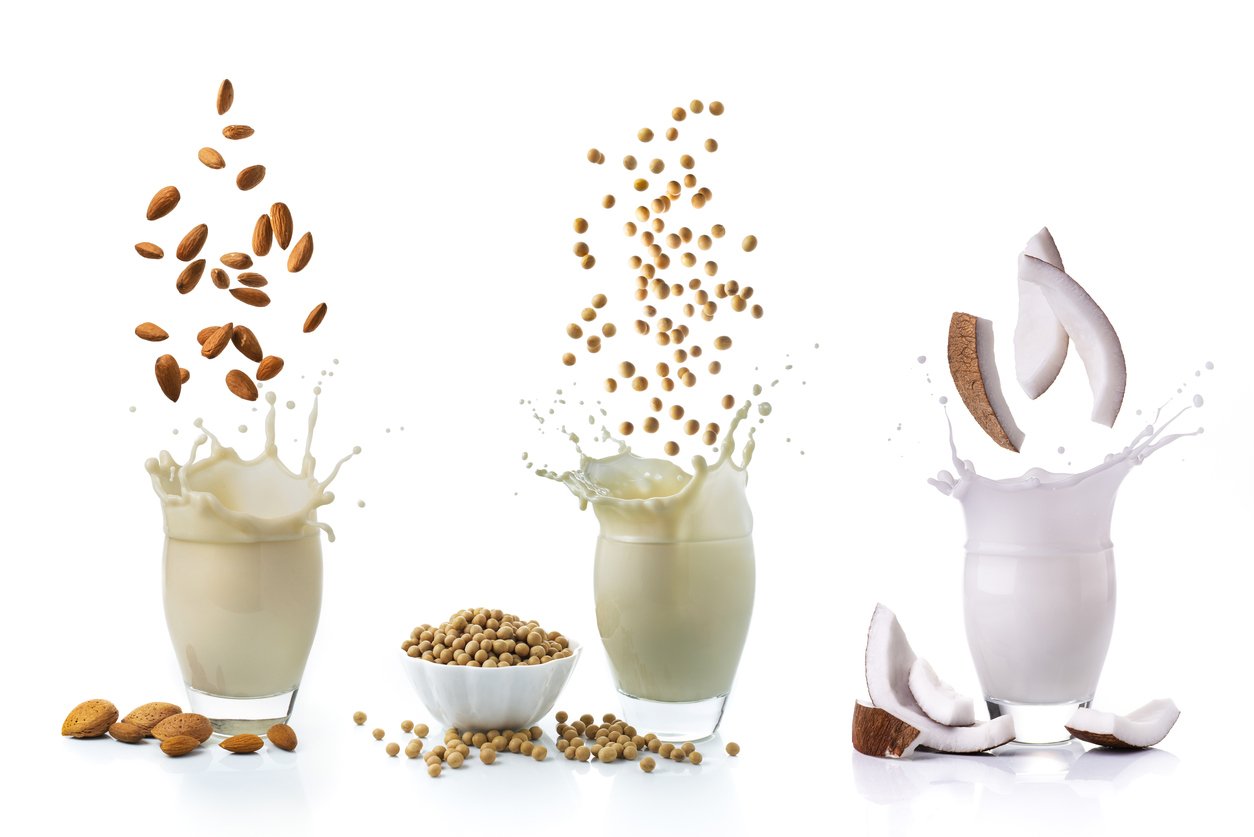

Plant-based milks that are alternatives to animal milk. Photo courtesy of iStock/luigi giordano
But the short of it is this: Americans are simply drinking less milk. In 1975, the average American drank roughly 24 gallons of milk per year, seven gallons more than the 17-gallon-per-person average in 2018.
There is some good news for the industry: Americans are still in love with butter and cheese, eating higher quantities of those dairy products than we used to.
What’s next for the dairy industry? How should producers adjust to the changing milk trends?
Get Acquainted with Consumers
Times have changed, and so have consumers. Producing a healthy, safe, and quality product is no longer enough to earn a dairy drinker’s trust. What does a consumer expect from their dairy purchases? Are they searching for healthy options, environmentally minded producers, organically fed cows, or locally sourced products?
There are groups of dairy lovers who value each of these factors (and sometimes all of them at once), but it’s essential for dairy producers to understand exactly what their customers want in order to best fill that need.
Innovate New Products
Milk, cheese, butter, cream: the classics. Delicious and dependable. But perhaps it’s time to shake things up.
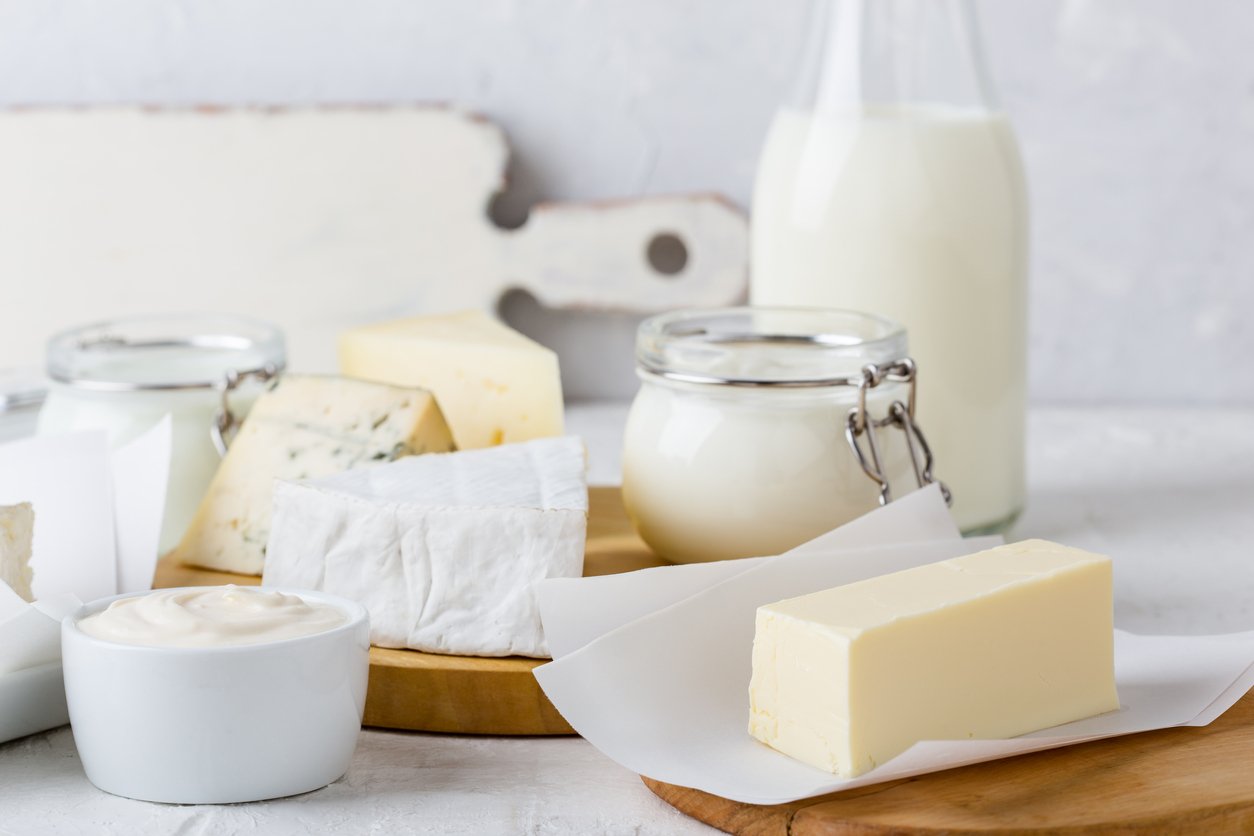

A variety of dairy products on a table. Photo courtesy of iStock/istetiana
Food companies are innovating new products to appeal to their clientele. Borden Dairy, for example, introduced a limited-edition line of milk flavors in August 2019. Inspired by the state fair, the company presented banana taffy, blueberry cobbler, and cotton candy-flavored milk.
Fairlife, a milk company established in 2012, has a line of ultra-filtered milk. By filtering the milk, separating it into different elements, and recombining them in different proportions, Fairlife creates a milk that is lower in sugar and higher in protein. Their milk is marketed as a healthier version of natural milk.
In answer, Horizon Organic has introduced high-protein milk aimed at athletes and muscle builders. They’ve added organic protein concentrate to their milk, marketing it as healthy support for muscle strengthening.
Grass-fed butter is another dairy product on the rise. As its name suggests, grass-fed butter comes from cows that have been fed a grass diet. It’s marketed as a more nutritious, vitamin-packed, healthy replacement to conventional butter, and with high-fat diets like Keto on-trend, it’s easy to see how this could take off.
As consumer tastes continue to evolve and diversify, expanding dairy’s product portfolio could be a key part of market profitability.
Invest in Technology
Less than 100 years ago, a farmer would spend an hour milking four cows. Today, thanks to machine automation, one person can milk 150 cows in an hour. Robotic milking systems save labor costs, improve quality control, and give farmers flexibility—no more being tied to a set milking schedule. They can also improve feed efficiency, which can lead to savings. Not only do farmers like the efficiency of robotic milking systems but the cows like it, too. Because they have more freedom of movement, the animals seem to be less stressed during milking, which results in higher yields.
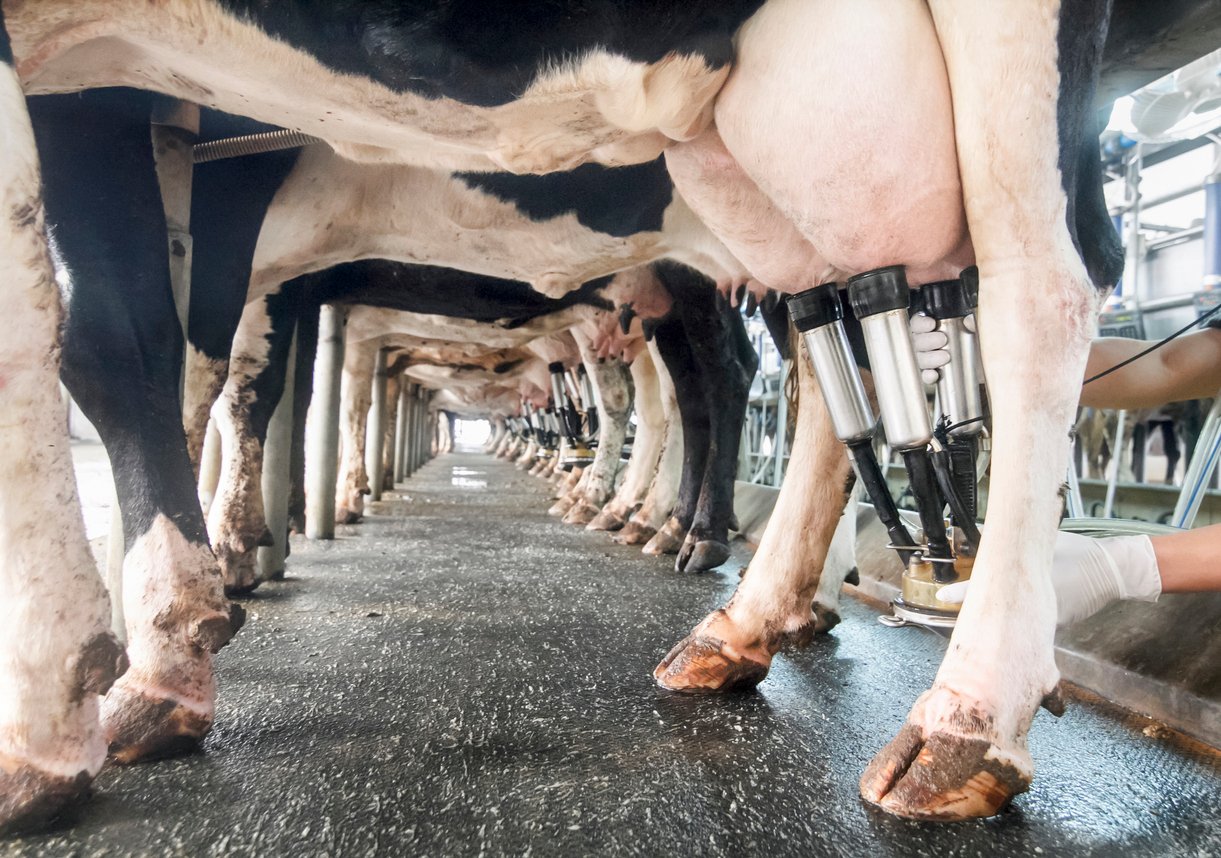

Rows of cows being milked. Photo courtesy of iStock/Toa55
But dairy technology isn’t limited to milking methods. Digital farming, which uses technology to optimize the farming process, is another great investment for future savings. Drones, satellite imaging, and crop technology are tools that can save a farmer time, money, and materials, helping with production costs and profit margins.
Dairy farmers are able to track the health of their herds through cow collars, operating like a Fitbit for bovines. The trackers monitor milk production, movement, weight, and more so that a farmer can gain a better understanding of the health of the herd. By flagging potential problems, the cow collars can save money in the long run.


A farmer using a tablet on their farm. Photo courtesy of iStock/PeopleImages
Finally, a recently released cow brush by DeLaval is designed to relax and groom cows to improve the health, performance, and overall well-being of a herd, touting the slogan “happy cows are productive cows.”
Lactose-free, Trending Up
Despite America’s decreasing interest in drinking milk, the global dairy market is projected to grow, with lactose-free milk leading the charge. The majority of the population prefers lactose-free milk and its lower sugar content, considering it a healthier choice than conventional cow’s milk.
With 90 percent of China’s population suffering from lactose intolerance, a global increase in the demand for lactose-free milk is only natural. Lactose-free milk is made by adding lactase enzymes to the milk. The enzymes remove the lactose from the milk, so your digestive system doesn't have to. Yogurt, dairy desserts, and other low-lactose products are also expected to see serious growth in the coming years.
No matter what the market trends indicate, Dixon products, like the DX60 hygienic tanker valve, are trusted in the dairy industry. Our broad line of 3A-certified pumps is comprised of the highest-quality finishes required on food-grade stainless steel. Whatever the future holds, we’ll be here to help increase your plant’s safety, efficiency, and bottom line.
If you’d like to speak with a specialist about our FDA-approved sanitary line, click here.
Sources:
- https://www.cnn.com/2019/11/21/business/milk-industry-dean-foods/index.html
- https://www.mckinsey.com/industries/consumer-packaged-goods/our-insights/a-winning-growth-formula-for-dairy
- https://www.agupdate.com/agriview/news/dairy/robotic-milking-systems-reaching-tipping-point/article_ec029e90-c741-5b23-9053-105df54e304b.html
- https://www.dairybusiness.com/
- https://www.mordorintelligence.com/industry-reports/dairy-products-market
- https://www.accessdata.fda.gov/scripts/cdrh/cfdocs/cfcfr/CFRSearch.cfm


